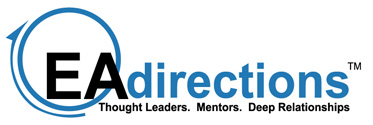For years we have seen and heard organizations, consultants, analysts (yes, even me) and other EA practitioners discuss the notion of EA MATURITY. Most of these discussions focus on metrics and levels similar to the Capability Maturity Model (CMM) process improvement system developed by the Systems Engineering Institute at Carnegie Mellon University. As a matter of fact, in the late 1990’s, I was part of a group at The META Group that developed and published a set of criteria to assess EA maturity similar to CMM. Over the years at META and since, though, I have started to develop a different opinion of using CMM-type assessments for enterprise architecture processes for a few reasons:
1. CMM was originally developed for project-level systems engineering capabilities. While some of the concepts are applicable to an enterprise-level planning process, the measures of success are not. Systems engineering has more tangible and immediate outcomes by which we can see if improved process maturity is resulting in more successful outcomes. The same is generally not true of EA.
2. In conducting several CMM-type EA process assessments, one of the experiences I had was that the exercise of collecting the responses to questionnaires aimed at rating EA capability maturity on a scale of 1 to 5 rarely resulted in any kind of consensus on levels of maturity. That exercise usually led to some very valuable discussions and outcomes, but the rating itself was far too subjective and inaccurate.
3. The measure of maturity itself tends to rise with age; however, the outcomes may or may not be improving as maturity increases.
I have concluded that it is better to accept the subjective nature of EA and instead assess the capabilities of an EA program based on several critical factors that indicate how effective the program is within the specific organization. The categories are similar to the ones that you have traditionally seen in EA maturity, but instead of rating the factors on a scale of 1-5 representing initial, repeatable, defined, managed and optimized; I use a scale that goes from significantly inhibits effectiveness to significantly enables effectiveness. I have outlined several of these factors in an article in our research area entitled Critical Success Factors for EA Effectiveness.
While this type of an assessment is a step forward in helping an EA team better understand its opportunities for improvement, obstacles to overcome and leverageable strengths; the best measure of success is still going to be the impact on shareholder value. However, I believe that being effective is a surer path to increasing shareholder value than being mature.
